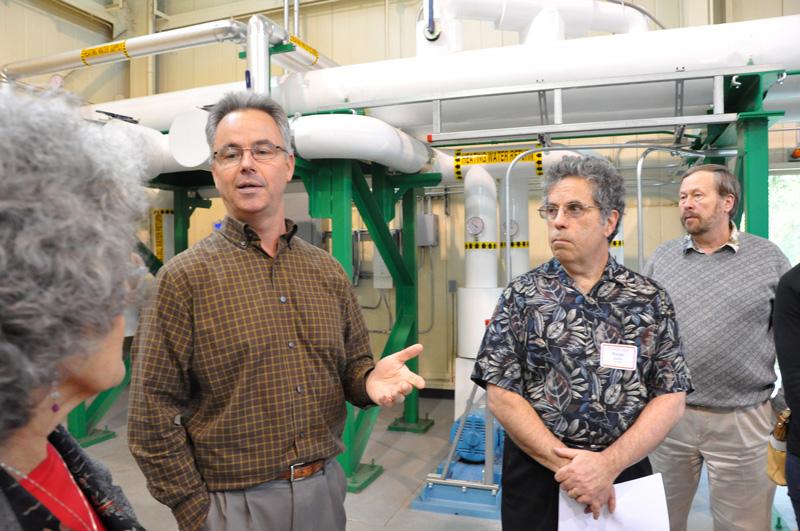
CSUN’s sub-tropical rainforest has been entered in the National Wildlife Federation’s “Chill Out Contest 2010.”
The Student Design program entered the sub-tropical rainforest into the national competition, after last year’s fuel cell entry and win, said Tom Brown, executive director and facility manager of the Physical Plant Management (PPM) at “Sustainability Initiatives: A View to the Future” event held on Feb. 25.
“We do make the extra effort to be as sustainable as possible,” Brown said. “Not to start any competition here but our energy performance track record is exemplary. Cal State Northridge has probably the best track record of all the CSU campuses, and I would suggest the UC campuses. CSUN is a leader in many aspects.”
Based on the amount of votes, the winner will be chosen, Brown said.
The technical symposium, which was hosted by the Environmental and Occupational Health Department (EOH), explored environmental initiatives at the university, national and international level.
Dr. Antonio Machado, the symposium co-chairman and associate professor of the EOH Department, kicked off the event saying improving sustainability at CSUN is so important.
“All of us have heard about sustainability in our jobs and it’s a wonderful concept,” Machado said. “The idea that we can do things in such a way that our children and grandchildren can do them the same way and everything will work out well. That sounds great. But it remains just that, a nice sounding concept. Unless we have the people to develop the initiatives, unless we have the people to implement those initiatives, unless we have the will to move forward with this, it’s all just a nice concept. That’s why we’re here tonight.”
The event started with a tour of CSUN’s one-megawatt hydrogen fuel cell and the sub-tropical rainforest. The fuel cell is a plant that generates electrical power without pollution because it only uses hydrogen and oxygen to operate, Brown said. It is nearly 80 percent efficient and has reduced the environmental impacts of the campus’ electrical system by more than 13 percent, according to the EOH records.
“Sustainability initiatives like the fuel cell support and enhance sustainability rather than push us down the road to the point where we have no place to store waste and damage the eco-system,” Machado said.
The sub-tropical rainforest is completely self-sufficient and sustainable, Brown said. The rainforest uses eight cooling towers and nearly 100 percent of the wastewater from the fuel cell, the only facility in the entire world to do this, Brown said. CSUN is also the only educational campus in the world to have a fully sustainable outdoor sub-tropical rainforest, he added.
Four guest speakers discussed university initiatives for sustainability, green chemistry advancements, the role of EOH professionals and business initiatives for sustainability.
Speaker Nurit Katz, UCLA’s Sustainability Coordinator and founder of the UCLA Sustainability Resource Center, said many universities are like cities and need to reduce campus consumption. For example, 75 percent of Los Angeles people drive to work alone, Katz said.
“Most people care but a lot of people don’t know how to get involved,” Katz said. “So what we’re producing is research and education. This is a really exciting field to be in and if you’re interested, you can get at it from a million different angles.”
Thomas Hatfield, the EOH Department chair, said the programs have been hit hard with the economic recession.
“The labs that we operate are absolutely the lifelines of the department and it is a dire situation and one of the worst times I’ve seen in 25 years,” Hatfield said.
Hatfield said any donation is greatly needed and appreciated.
CSUN has achieved great advancements in greening the campus but there is a lot of grassroot goals to accomplish, said Michael Sullivan, the associate professor of the EOH Department.
“The presenter talked about the percent we recycle but that’s only half the story,” Sullivan said. “If we can reduce the amount of waste we have to recycle, it’s even better.
We can save huge amounts of energy and reduce our carbon footprint by doing simple things. If they (students) stop using water bottles here, they’ll stop using water bottles at the next place. It really incorporates the idea of sustainability by having a sustainable behavior.”





